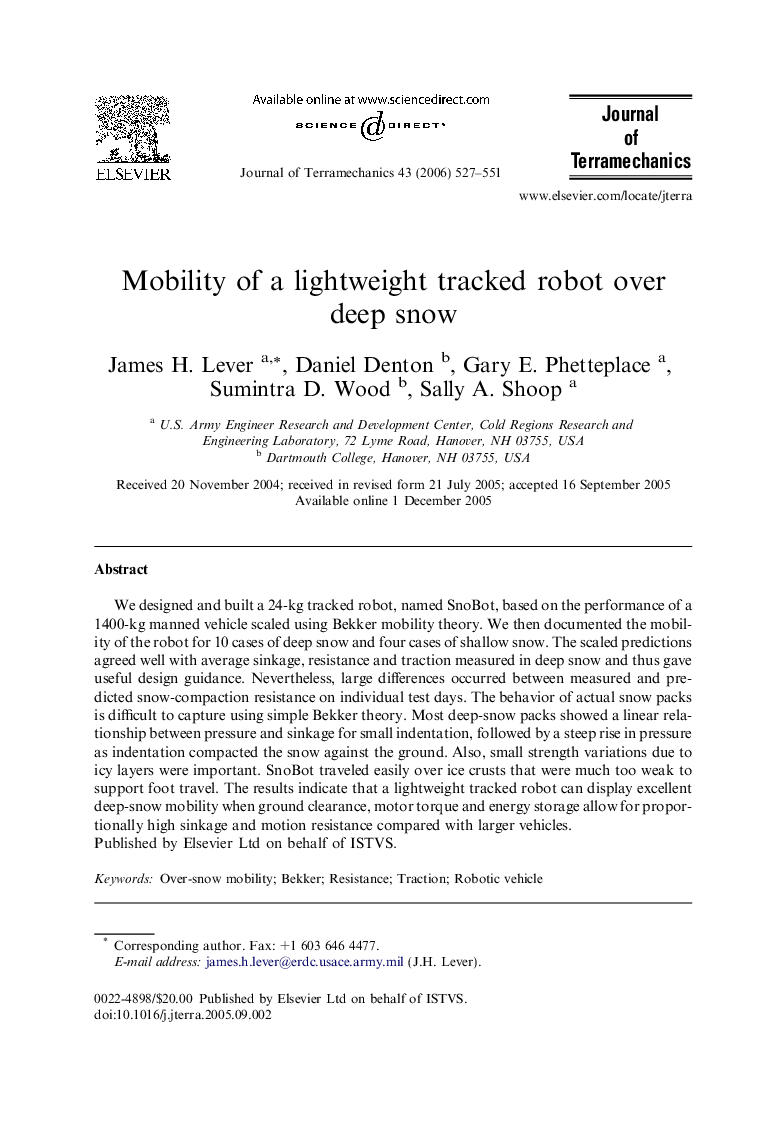| Article ID | Journal | Published Year | Pages | File Type |
|---|---|---|---|---|
| 799246 | Journal of Terramechanics | 2006 | 25 Pages |
We designed and built a 24-kg tracked robot, named SnoBot, based on the performance of a 1400-kg manned vehicle scaled using Bekker mobility theory. We then documented the mobility of the robot for 10 cases of deep snow and four cases of shallow snow. The scaled predictions agreed well with average sinkage, resistance and traction measured in deep snow and thus gave useful design guidance. Nevertheless, large differences occurred between measured and predicted snow-compaction resistance on individual test days. The behavior of actual snow packs is difficult to capture using simple Bekker theory. Most deep-snow packs showed a linear relationship between pressure and sinkage for small indentation, followed by a steep rise in pressure as indentation compacted the snow against the ground. Also, small strength variations due to icy layers were important. SnoBot traveled easily over ice crusts that were much too weak to support foot travel. The results indicate that a lightweight tracked robot can display excellent deep-snow mobility when ground clearance, motor torque and energy storage allow for proportionally high sinkage and motion resistance compared with larger vehicles.
